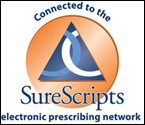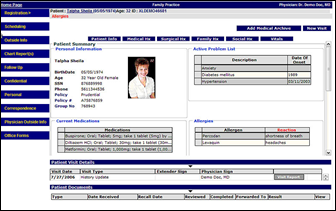The article about Pediatric Associates in CA has a nugget with a potentially outsized impact: the implication that VFC vaccines…
News 3/11/10
From: Phased “Re: Dr. Alexander and Meaningful Views. I was excited to read your blog post about Meaningful Views, and helping physicians delivery better quality care, by providing tools and rich data that is easy to digest, accessible, and fast to access. From my perspective, it seems that the main focus for a majority of companies and industry folk, is simply revolving around the “Meaningful Use” buzzword, and the reimbursement incentives. Not so much around helping the ACTUAL population responsible for making the healthcare system better!!”
The ONC officially publishes its proposed rule establishing two certifications programs to test and certify EHRs. Organizations wanting to qualify as an “ONC-Authorized Certification Body” for the “temporary” program would be required to submit an application and demonstrates its competency to test and certify EHRs. CCHIT has not been granted grandfather status for testing, though they will likely be one of only a few organizations ready and able to qualify under the new program. Creating the temporary program would allow EHR programs or modules to be certified as early as this summer, and thus eliminating uncertainty as to whether or not a particular product is “certified” for incentive programs. The temporary program would expire the first quarter of 2012 and replaced with a permanent program that would designate an outside agency to certify organizations.
Quest Diagnostics and Surescripts team up to form an integrated service that combines lab and prescription information available to connected physician. On the surface the announcement doesn’t sound like much, but when you consider that Quest has 150,000 connected physicians and Surescripts has 170,000 active subscribers, that’s a lot of providers that will now have electronic access to both lab and prescription data.
Annapolis Pediatrics selects Sage Intergy suite to automate its clinical and financial operations. Annapolis Pediatrics is a four-location, 21 provider group.
Physicians Practice Organization (IN) implements MedInformatix Enterprise Practice Management and EMR to 14 of its 17 affiliated clinics.
By 2012, 81% of physicians are expected to use smartphones, according to a Manhattan Research study. Of those smartphone users, half will utilize the devices for administrative functions, learning, and patient care.
The Ohio House of Representatives passes a bill that would create and test a patient-centered medical home. Participating physicians could be eligible for reimbursements up to 75% for any HIT system purchased for the project, including training and technical support required for the medical home conversion. The bill now goes to the Ohio Senate for consideration.
Here’s some fuel for the naysayers who claim automation doesn’t improve quality of care. Canadian researchers find that computer reminders sent to physicians during routine electronic ordering or charting improve yield smaller improvements than expected. A review of 28 clinical trials yielded a median improvement of only 5.6%.
ASG Software Solutions and CTG Healthcare Solutions form a partnership that leverages CTG’s implementation and training expertise to install the ASG-MedAppz EMR.
Ingenious Med announces a new application for BlackBerry smartphones that will allow physicians to access the charge and data capture applications within their IM Practice Manager software.
CNNMoney takes a look at the EMR field, pointing out that the industry is ripe for consolidation. Of today’s 300 to 400 vendors, look for some of the bigger players to purchase smaller companies. Often the large vendors are not interested in catering to smaller practices, which works in favor Internet-based EMR vendors who typically can offer providers a lower-priced alternative. None of this is particularly new news if you been in the EMR world awhile. What is interesting is that the main stream press is focusing attention on our space like never before.
CMS posts additional public comments to the proposed meaningful use definitions. The public still expresses concern that the bar is set too high, especially in the early years. Other comments suggest the government needs to re-think such areas as interoperability, the definition of eligible provider, and specialist requirements. Here is a sampling:
The requirements for meaningful use are too restrictive to be of any value to most specialty physicians. Only a complete EHR will provide the value we are all looking for. Primary care physicians are about the only ones that can take advantage of the incentives and therefore will be the only ones adopting EHR’s. Specialty practices all have something to contribute to a complete and comprehensive EHR; leaving them out will only result in a lot of money spent with very little gained. I think there’s still a lot of work left to do to incent all necessary groups to participate.
The incentive is flawed when you consider that the current EHR technology is built on the current healthcare business model, which most agree is suspect and requires reform. Change the business model first, then adapt new EHR technology with incentive. Meaningful use objectives and measures for EP’s are unrealistic and if they are anything like PQRI are meaningless. Therefore the incentive is likely not achievable for many physicians.
As a community hospital employing 150 outpatient PCPs who utilize hospital-based billing, we find the ruling of our ineligibility for the outpatient EHR incentive program non-congruent with the stated objectives of this program. Conceptually, hospital-based billing is a separate and unrelated issue from the capacity to develop and use outpatient EHRs in a meaningful way to improve patient safety and quality. We strongly urge a reconsideration of this issue in order to align the incentives of our institution with the goals of the Office of the National Coordinator.





